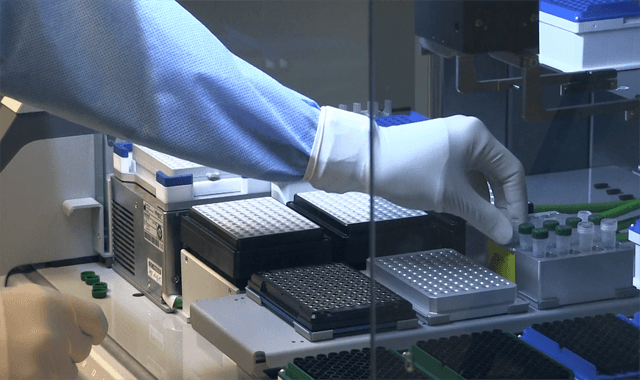Massively Parallel Sequencing Likely to be a Game Changer

Science has come a long way when it comes to identifying human remains, thanks in no small part to the implementation of DNA profiling in the late ‘80s. But it’s often not as easy as TV crime shows, like CSI or NCIS, might have you believe.
Solving missing person cases requires testing of DNA from remains (often degraded tissue or weathered bones) and then comparing those results with samples from family members of those missing loved ones. It’s a difficult and complicated process and not one most local crime labs can handle.
Something called “massively parallel sequencing” technology has the ability to change that.
Massively parallel sequencing (MPS), also known as next-generation sequencing (NGS), is a mainstream technology in many academic areas and has led to discoveries in medicine, biology and environmental science. But most forensic laboratories are not yet ready to implement the technology.
How it Works
Brace yourself. Here comes some science.
MPS uses massively parallel processing to increase the speed and processing power of DNA sequencing. That means MPS devices can process millions of reads (sequences of nucleotides) per run. This gives MPS a significant advantage over other existing technology, like capillary electrophoresis (CE).
With MPS, a single sequencing run may generate data that encompasses a wide range of genetic marketers, such as short tandem repeats (STRs), single nucleotide polymorphisms (SNPs) and mitochondrial DNA (mtDNA). This can provide a significant advantage when dealing with samples of limited quality, including highly degraded samples and complex mixed samples.
Another crucial advantage MPS has over CE sequencing is that it allows forensic labs to extract meaningful information from samples even when database searches do not confirm a match. This can include statistical predictions for ancestry and geographic origin, potential familial relationships and even certain physical characteristics. This ability may prove to be of critical significance in providing clues for identification of unknown human remains.
Implementing the Technology
Moving MPS into the mainstream for forensic application will take a dedicated effort from labs. Implementing the technology requires changes in instrumentation, workflow, quality control, validation and training.
In addition to leading a study sponsored by the National Institute of Justice on strategic pathways for implementation of MPS, Battelle has been working with the Ohio Bureau of Criminal Investigation for the past year to implement MPS in an Ohio BCI lab. Together, we’ve developed a roadmap to guide implementation for other forensic labs.
The five main components of implementation are:
- Selecting an MPS platform
- Preparing your physical laboratory space
- Training of laboratory staff
- Adapting workflows for your lab’s specific MPS needs
- Validation of new equipment and workflows
For full details on implementation in your forensic lab, download Battelle’s new white paper: Moving MPS to the Mainstream: An Implementation Roadmap for Massively Parallel Sequencing in Forensic Labs.
Sign Up for Battelle Updates
Follow along with the latest news, announcements and updates from our Battelle community of solvers.